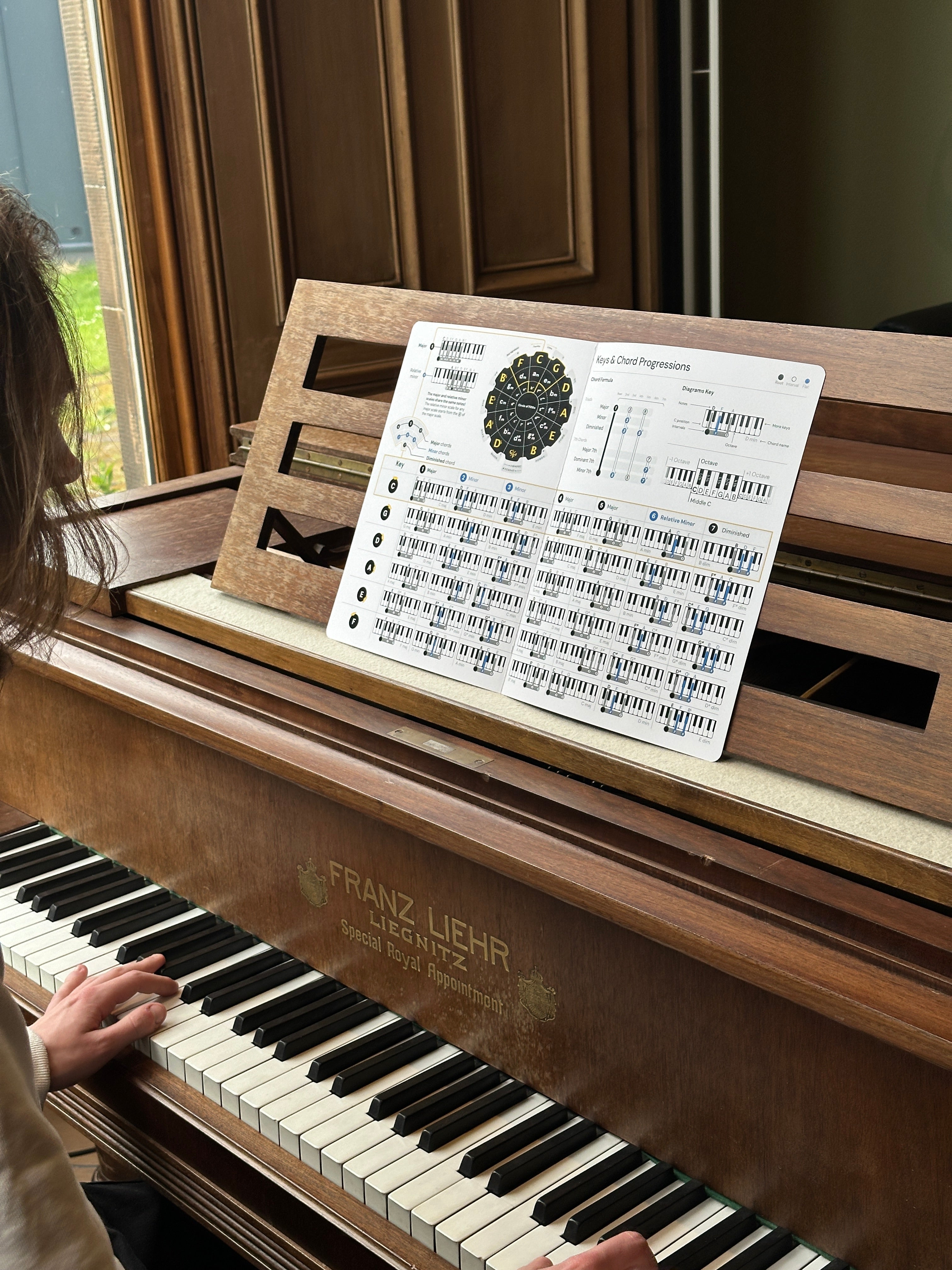Welcome to Noisy Clan!
Are you an aspiring pianist struggling to memorise all those complicated chord patterns? Do you find yourself getting lost and frustrated when trying to play along with your favourite songs? If so, you've come to the right place!
At Noisy Clan, our mission is to help you play more! That's why we created our innovative Decoder line of “amazing tools for musicians” that get you away from your screens and straight to making music with ease.
Our Cheat Sheets are designed to be comprehensive yet easy-to-use visual references that show you exactly how to form every chord you'll need, from basic major and minor chords to more complex jazz and sophisticated chords. But we don’t want to just give you the chord shape, we want you to understand how to build your own chords anywhere on the keyboard. With crystal clear design, chord structures, chord key groups, and our Chord Formula, Decoder products allow you to quickly build and play the correct chords without having to memorise countless patterns and variations.
We do things a little differently at Noisy Clan and this post will guide you to understand how to get the most from your Cheat Sheet.
Orientation:
On the download you received chords that are grouped into 6 starting Keys. For each key we show the 7 common chords that are contained in the key. These 7 chords work beautifully together and can be used in compositions or simply to figure out what chords are in your favourite song.
The entire 12 Keys are found on the Circle of Fifths that is included. This handy reference guide has been called the Holy Grail of music theory and crystallises oodles of music theory in a very succinct graphic. The image shows a portion of the Circle of Fifths.

This gives you:
- Closely related chords
- Chord Families
- Relative Minor Keys
- Key Signatures.
The key (forgive us the pun) to unlocking this information is how the chords are grouped together in the graphic shown below. For example:
Let's choose D as our Key and imagine the graphic rotated to have the D be in the 1 position. The Circle of Fifths graphic shows that the 4 and 5 in the key will sit on the outside radius, to the left and right of the D respectively.

The Circle of Fifths shows us that G is the 4th and the A is the 5th. Another example for the key of D shows the relative minor, which is the 6th of the scale, as Bm. The grey tab on the outer edge shows the key signature for the key it is next. In our case for the key of D the chord signature shows that there are 2 sharps, C# and F#.
Chord formula:
One of the most overlooked aspects of our Decoder system is the Chord Formula shown below. This handy reminder helps you build any of the chords listed starting from the simple 1-3-5 major chord. This is based on intervals which in music is simply the distance between notes. We cover more on intervals in other blog posts.

The key here is knowing that a major chord is built from the 1, 3 and 5 notes in the major scale for that root note.
Here is an example for the F chord. We show all our chords with the location of the notes to be played and most importantly with the nature of the note highlighted underneath.

The Root note F is highlighted underneath with the black dot. From the Chord formula F major is built starting with the F as the root note, adding the third and fifth to complete the triad. These are shown in this chord diagram. The 3 is A and the 5 is C. So an F Major chord is the combination of the F, A and C notes highlighted above.
The Chord Formula shows how to build the F minor starting with major chord as the fundamental building block.

The difference between an F Major and F minor is the third is flattened by a half step. Below is our typical chord diagram showing F minor. The flattened 3rd is highlighted by the blue finger to represent the flattening and the 3 label. The grey finger and circled 5 indicate no change from the standard major 5th.

Our number one goal is to quickly and clearly show you the chord you want so you can immediately play it. However, we strongly believe that understanding the simple underlying structure will set your musical life alight and open up many more possibilities for learning and most importantly playing.
To show this for a slightly more complex chord, the Chord Formula for a minor 7th is shown below:

Here is the F minor 7th chord.

Whether you're a total beginner trying to fumble your way through "Chopsticks" or a seasoned player attempting to master a difficult chord progression, Cheat Sheets can be your trusty guide. Keep one of our handy chord charts near your piano or keyboard, and you'll be able to instantly play along with the songs you love.
But Decoders aren't just for chords - we also offer helpful tools for scales, arpeggios, keys, and more. Browse our store to find the right Decoder to elevate your piano play.
Thanks for visiting our site, and stay tuned for more tips, musical insights, and new products from Noisy Clan!








